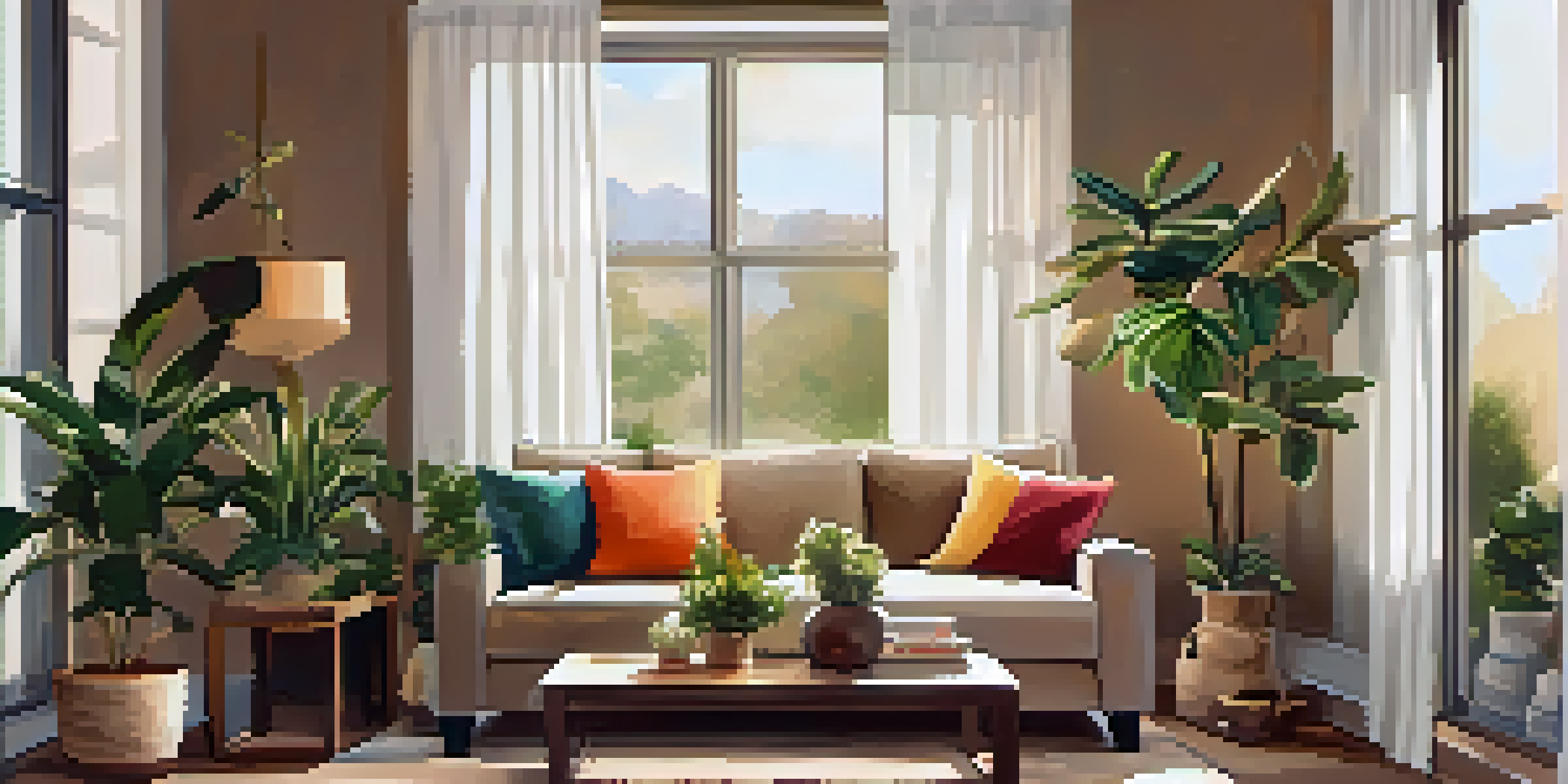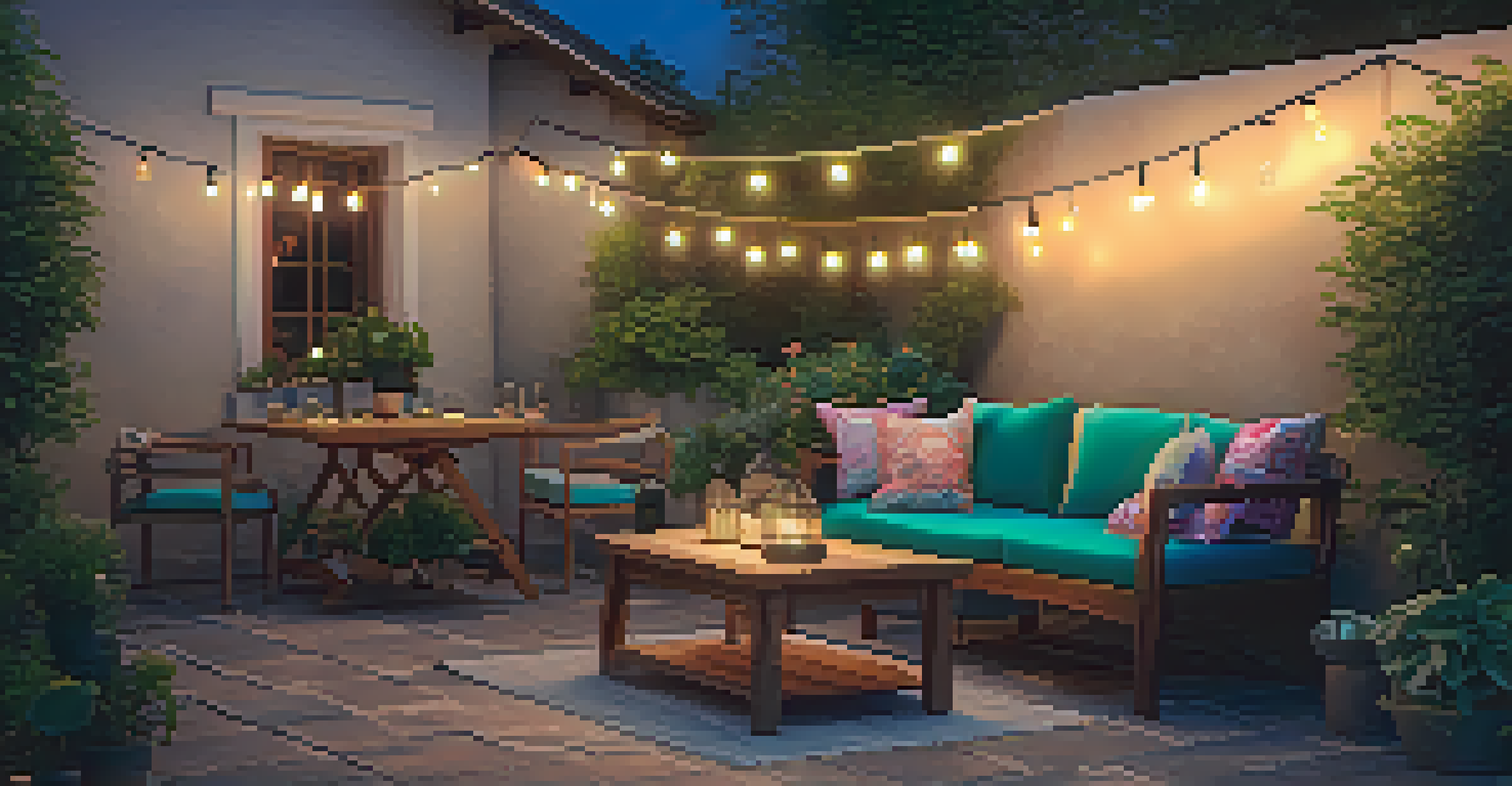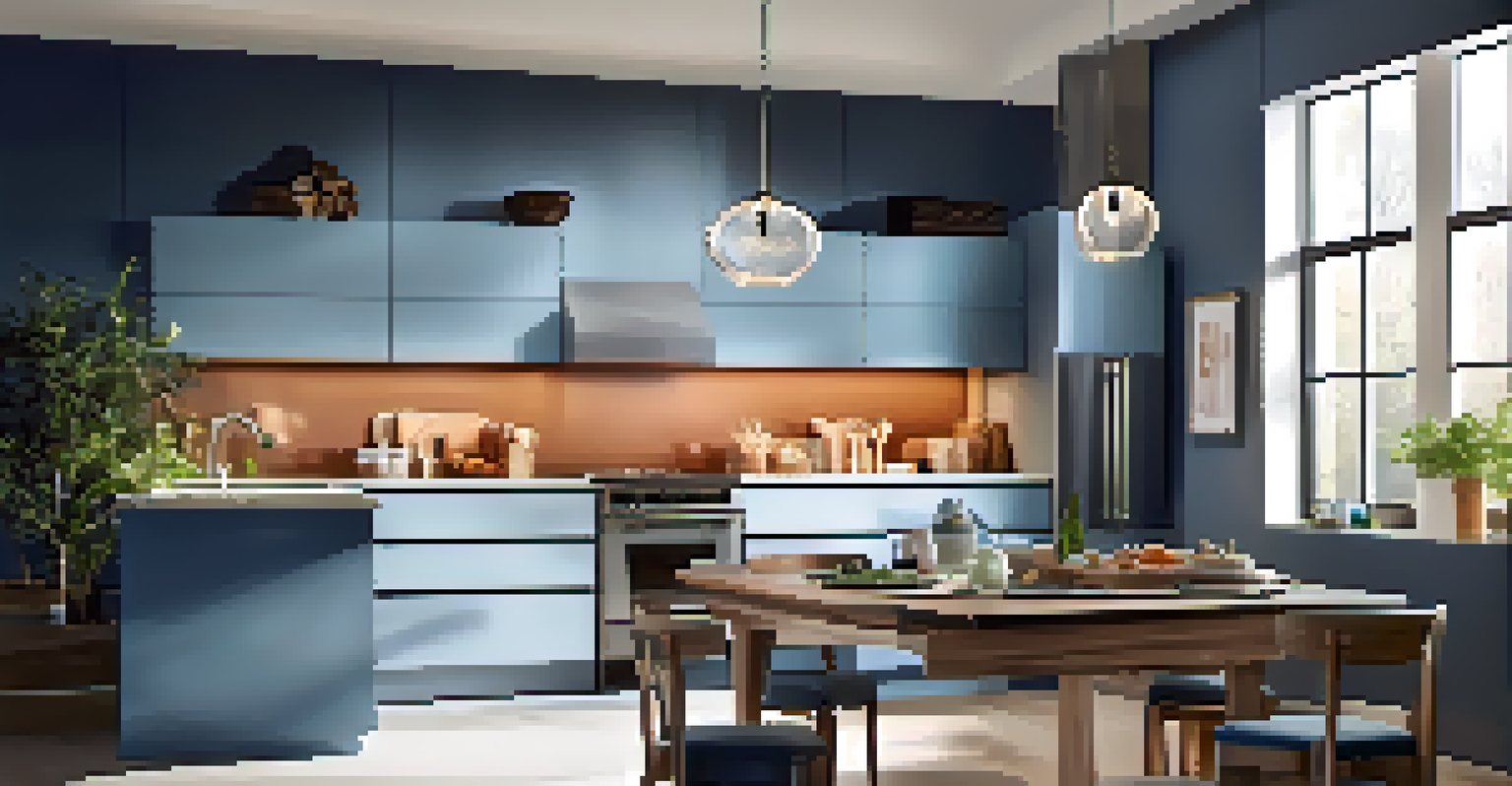Innovative Lighting Techniques for Small Space Functionality

Understanding the Impact of Lighting on Small Spaces
Lighting plays a crucial role in how we perceive space. In small areas, the right lighting can create an illusion of depth and openness. Think of it like painting a room; the colors you choose can either make it feel cramped or expansive.
Lighting is the first thing that you need to consider when designing any space.
Natural light is a game changer. When possible, maximize windows and use sheer curtains to let sunlight flood in. This not only brightens up the space but also gives it a more airy feel, making it seem larger than it really is.
Conversely, poor lighting can make even the most stylish small rooms feel uninviting. Dim, harsh, or uneven lighting can create shadows and a cluttered atmosphere. Understanding how light interacts with your space is the first step toward effective design.
Layering Light: The Three Types of Lighting
Layering light is an essential technique for small spaces. It involves using three types of lighting: ambient, task, and accent. Ambient lighting provides the overall illumination, while task lighting focuses on specific areas for activities like reading or cooking.

Accent lighting adds drama and highlights features like artwork or architectural details. By combining these three layers, you can create a warm, inviting environment that feels both functional and stylish.
Lighting Creates Illusions of Space
Utilizing the right lighting can enhance depth and openness in small areas, making them feel larger and more inviting.
Imagine your living room with a soft overhead light, a bright reading lamp, and some spotlights on your favorite photographs. This layered approach not only enhances the room's usability but also adds depth and character.
Using Mirrors to Amplify Light and Space
Mirrors are a fantastic trick to enhance lighting in small spaces. They reflect both natural and artificial light, making the space feel brighter and more open. Positioning a mirror opposite a window can double the amount of light coming into a room.
Light is the magical ingredient that brings your home to life.
Additionally, mirrors can create the illusion of depth. When placed strategically, they can make a narrow hallway or compact room appear larger than it actually is. It's like having a window where there isn’t one!
Just remember, balance is key. Too many mirrors can create a disconcerting effect, so choose one or two statement pieces that complement your decor while enhancing light flow.
Smart Lighting Solutions for Small Spaces
Smart lighting systems are perfect for small spaces, as they allow you to control brightness and color with ease. Imagine dimming the lights for a cozy movie night or brightening them for a lively gathering—all with a simple tap on your smartphone.
These systems can also be programmed to follow your daily routine. For instance, the lights can gradually brighten in the morning to mimic a sunrise, making it easier to wake up. This not only enhances functionality but also improves your overall well-being.
Layered Lighting Enhances Functionality
Combining ambient, task, and accent lighting creates a warm, stylish environment that is both functional and visually appealing.
Integrating smart lighting into your space can add a touch of modern sophistication while maximizing functionality. Plus, it can save energy, making it a practical choice for eco-conscious homeowners.
Color Temperature: Choosing the Right Light Bulbs
The color temperature of your light bulbs can significantly influence the mood of a small space. Warm light (around 2700K) creates a cozy and inviting atmosphere, perfect for living areas and bedrooms.
On the other hand, cool white light (around 4000K) is great for kitchens and workspaces, as it promotes alertness and focus. It’s like choosing the right outfit for the occasion—each type of light serves a different purpose.
Consider mixing bulb types in different areas of your small space. This approach not only enhances functionality but also adds visual interest, making your home feel dynamic and well thought out.
Creative Fixtures: Making a Statement
Choosing the right light fixtures can elevate the style of a small space. Unique pendant lights or sculptural wall sconces can serve as focal points that draw the eye upward, creating an illusion of height.
For small dining areas, consider a bold chandelier that adds character while illuminating the table. It’s a great way to combine functionality with artistic flair, making your dining experience feel special.
Smart Solutions for Modern Living
Smart lighting systems allow for customizable brightness and color, enhancing comfort and energy efficiency in small spaces.
Don’t shy away from experimenting with different sizes and shapes. A well-placed statement fixture can transform an ordinary corner into a stylish nook that feels both cozy and chic.
Outdoor Lighting: Extending Your Space
Outdoor lighting can be a game-changer for small spaces, especially if you have a balcony, patio, or garden. String lights or lanterns can create a magical atmosphere, making your outdoor area feel like an extension of your home.
Incorporating outdoor lighting allows for additional functionality, perfect for entertaining or relaxing in the evening. Imagine sipping your favorite drink under twinkling lights; it’s an instant mood boost.

Plus, outdoor lighting enhances safety and security, making your small space not only cozy but also practical. It’s a beautiful way to expand your living area and enjoy the outdoors.